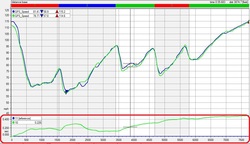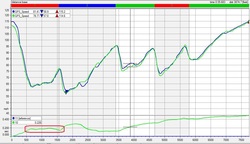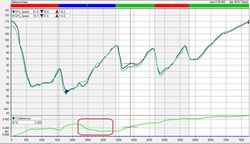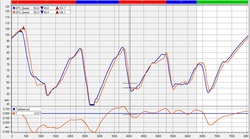

Now, interestingly, you’ll see that the time variance graph pretty much levels out (highlighted in figure two). That means that at that point, the two laps were at about the same pace. Next, just after 1500 feet, you see that the time variance graph increases sharply, meaning that the time difference is growing again. What can be of even more interest is where the graph is decreasing – as shown in the third graph. This is an area where the slower lap was gaining time on the faster (or reference) lap.


Just like when we started, we don’t now the “why” but we know now the where. With the Time Variance graph, we have a place to look to see where we went fast or slower, giving us an area to investigate further.

 RSS Feed
RSS Feed
